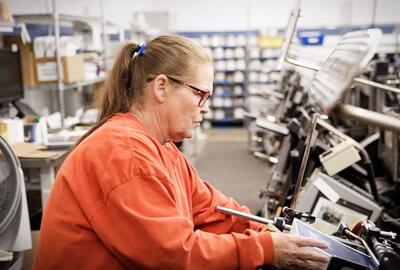Little Movement in Unemployment Rate
Jobs Growth
Employment in August showed the creation of 22,000 new jobs. This activity lagged a restated July figure of 79,000 jobs.
Top Industries
August job gains in healthcare and social assistance, as well as leisure and hospitality, were partially offset by losses in federal government employment, mining, quarrying, and oil and gas extraction.
Unemployment
Both the unemployment rate, at 4.3%, and the number of unemployed people, at 7.4 million, changed little in August.
Wages
Weekly hours were unchanged over the past three months at 34.2 hours.
Work Week
Weekly hours shifted up in July, from 34.2 hours to 34.3.
Temporary Job Trends
Employment in the temp sector continued to fall in August, with a loss of 9,800 jobs.
What Does It All Mean?
With another month of lower-than-expected activity in the employment market, the shroud of uncertainty continues to linger over the economy. Unlike the extended period of strong growth following the pandemic, the latest month and several recently restated monthly reports of far slower jobs creation point to a weakening labor market. At the same time, the unemployment rate inched up slightly, although it remained clearly in the neighborhood of full employment trends.
While on the surface, these numbers paint a dismal picture, the upside is that they generate greater impetus for the elusive rate cuts from the Federal Reserve Bank. Lower interest rates are expected to spur business investments, consumer spending, and increased hiring. On the reverse side, weakening in the monthly employment numbers strengthens fears about the overall health of the economy. Into this mix of uncertainty about the impacts of tariffs, immigration policy, inflation, federal
government downsizing, and AI, employers hesitate to hire and employees struggle to secure new opportunities.
The greatest frustration is the requirement for patience. Changes to the current situation, whether good or bad, take time. The watchword for the immediate future may be “caution,” but a more effective strategy would be agility. Look for ways to flex more swiftly as market conditions shift. Consider where temporary talent can make a difference. Companies that take advantage of economic plateaus like this to retool, reskill, reorganize, and reallocate workforce resources where they will have the greatest impact tend to emerge stronger, more resilient, and far more agile in the long run.
Sources: U.S. Bureau of Labor Statistics, Staffing Industry Analysts, NBC News, CNBC, USA Today, Bloomberg, The Wall Street Journal, FOX, CBS, Business Insider






